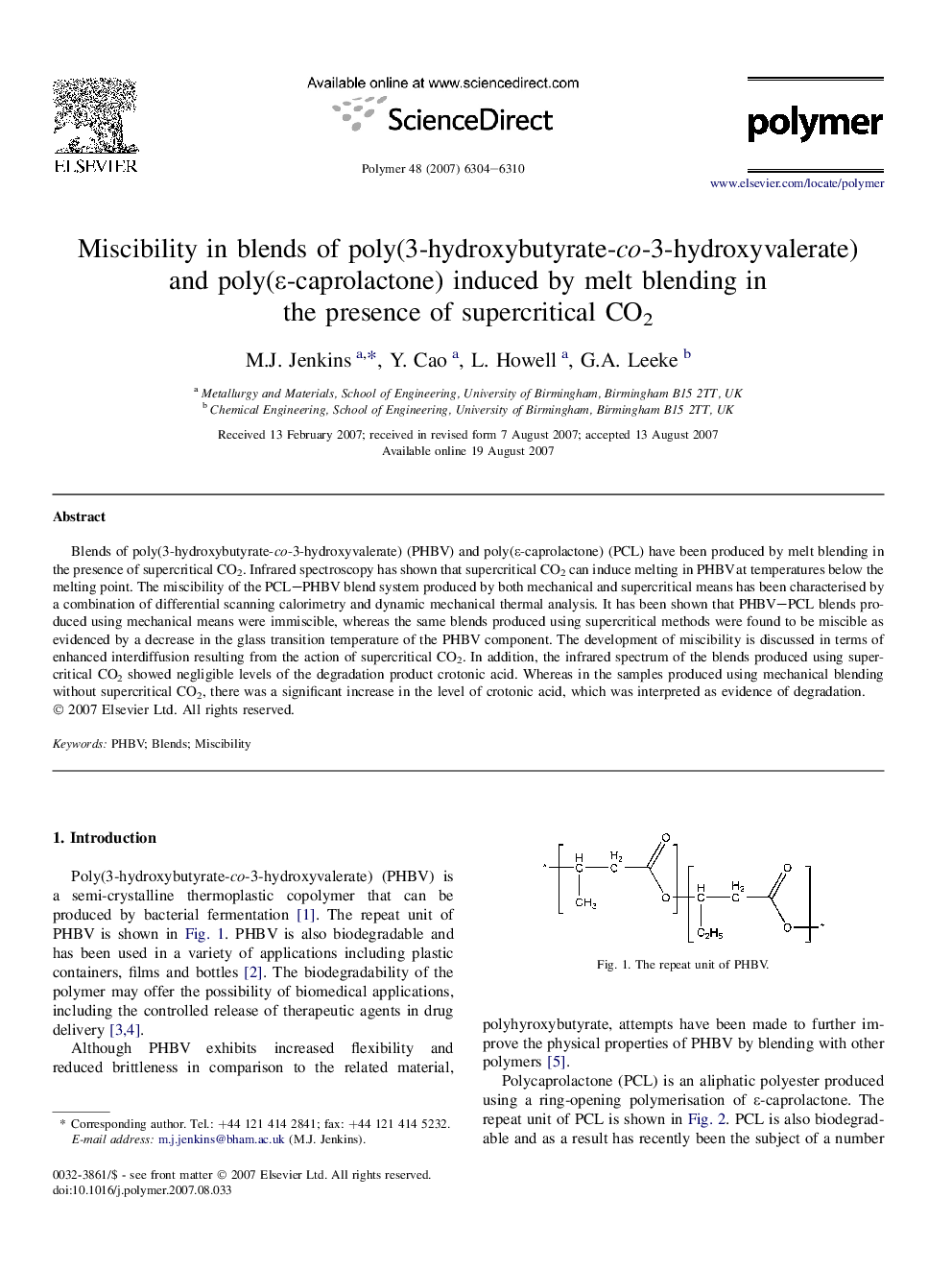| کد مقاله | کد نشریه | سال انتشار | مقاله انگلیسی | نسخه تمام متن |
|---|---|---|---|---|
| 5188523 | 1381158 | 2007 | 7 صفحه PDF | دانلود رایگان |
عنوان انگلیسی مقاله ISI
Miscibility in blends of poly(3-hydroxybutyrate-co-3-hydroxyvalerate) and poly(É-caprolactone) induced by melt blending in the presence of supercritical CO2
دانلود مقاله + سفارش ترجمه
دانلود مقاله ISI انگلیسی
رایگان برای ایرانیان
کلمات کلیدی
موضوعات مرتبط
مهندسی و علوم پایه
شیمی
شیمی آلی
پیش نمایش صفحه اول مقاله

چکیده انگلیسی
Blends of poly(3-hydroxybutyrate-co-3-hydroxyvalerate) (PHBV) and poly(É-caprolactone) (PCL) have been produced by melt blending in the presence of supercritical CO2. Infrared spectroscopy has shown that supercritical CO2 can induce melting in PHBV at temperatures below the melting point. The miscibility of the PCL-PHBV blend system produced by both mechanical and supercritical means has been characterised by a combination of differential scanning calorimetry and dynamic mechanical thermal analysis. It has been shown that PHBV-PCL blends produced using mechanical means were immiscible, whereas the same blends produced using supercritical methods were found to be miscible as evidenced by a decrease in the glass transition temperature of the PHBV component. The development of miscibility is discussed in terms of enhanced interdiffusion resulting from the action of supercritical CO2. In addition, the infrared spectrum of the blends produced using supercritical CO2 showed negligible levels of the degradation product crotonic acid. Whereas in the samples produced using mechanical blending without supercritical CO2, there was a significant increase in the level of crotonic acid, which was interpreted as evidence of degradation.
ناشر
Database: Elsevier - ScienceDirect (ساینس دایرکت)
Journal: Polymer - Volume 48, Issue 21, 5 October 2007, Pages 6304-6310
Journal: Polymer - Volume 48, Issue 21, 5 October 2007, Pages 6304-6310
نویسندگان
M.J. Jenkins, Y. Cao, L. Howell, G.A. Leeke,